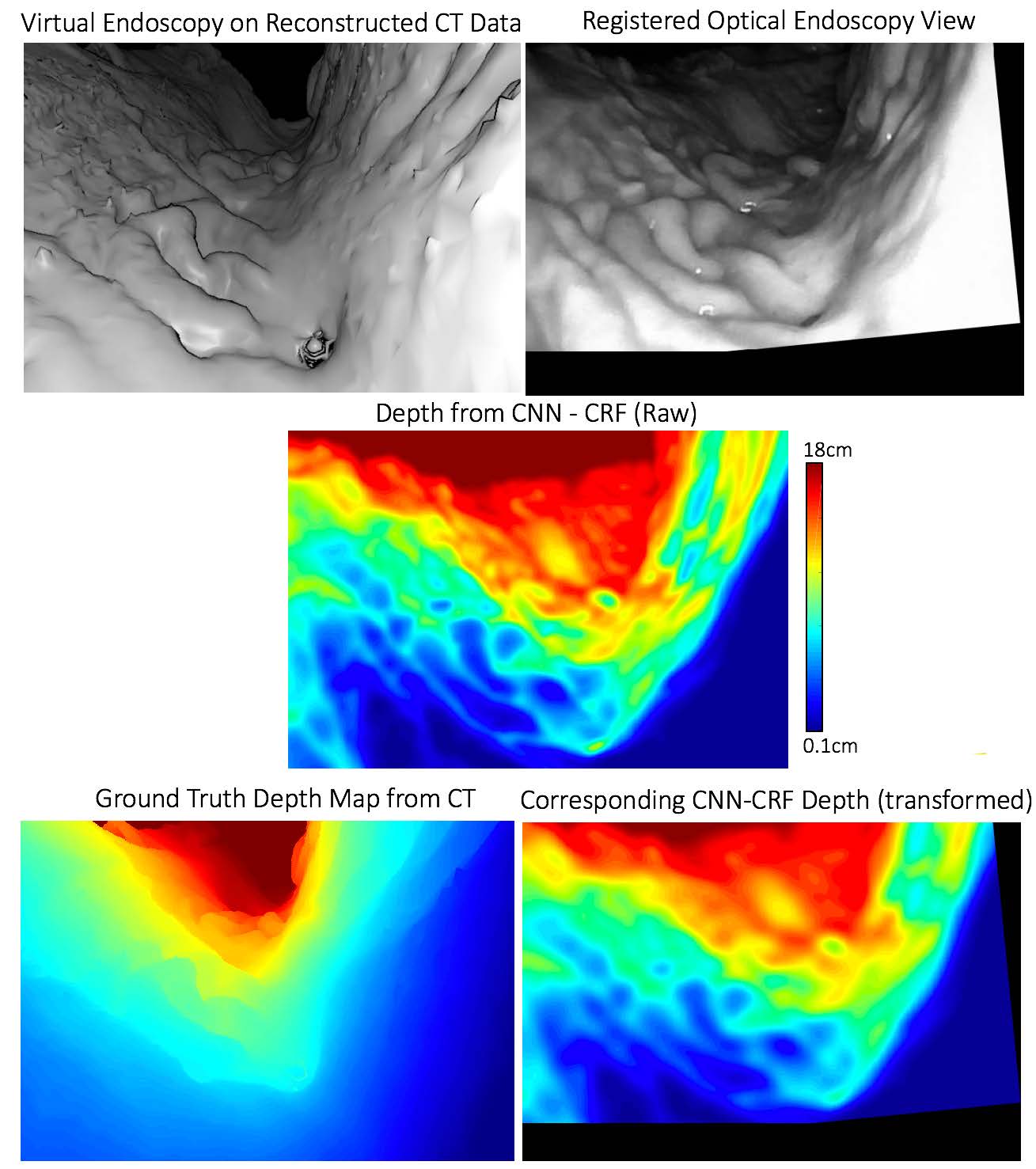Deep Learning and Conditional Random Fields-based Depth Estimation and Topographical Reconstruction from Conventional Endoscopy
Mahmood F, Durr NJ
Medical Image Analysis (48) 2018
Publisher’s Link | arXiv
Abstract
Colorectal cancer is the fourth leading cause of cancer deaths worldwide and the second leading cause in the United States. The risk of colorectal cancer can be mitigated by the identification and removal of premalignant lesions through optical colonoscopy. Unfortunately, conventional colonoscopy misses more than 20% of the polyps that should be removed, due in part to poor contrast to lesion topography. Imaging tissue topography during a colonoscopy is difficult because of the size constraints of the endoscope and the deforming mucosa. Most existing methods make geometric assumptions or incorporate a priori information, which limits accuracy and sensitivity. In this paper, we present a method that avoids these restrictions, using a joint deep convolutional neural network-conditional random field (CNN-CRF) framework. Estimated depth is used to reconstruct the topography of the surface of the colon from a single image. We train the unary and pairwise potential functions of a CRF in a CNN on synthetic data, generated by developing an endoscope camera model and rendering over 100,000 images of an anatomically-realistic colon. We validate our approach with real endoscopy images of phantom and porcine colons, with ground truth from registered computed tomography measurements. The CNN-CRF approach estimates depths with a relative error of 0.152 for synthetic endoscopy images and 0.242 for real endoscopy images. We show that the estimated depth maps can be used for reconstructing the topography of the mucosa from conventional colonoscopy images. This approach can easily be integrated into existing endoscopy systems and provides a foundation for improving computer-aided detection algorithms for detection, segmentation and classification of lesions.
